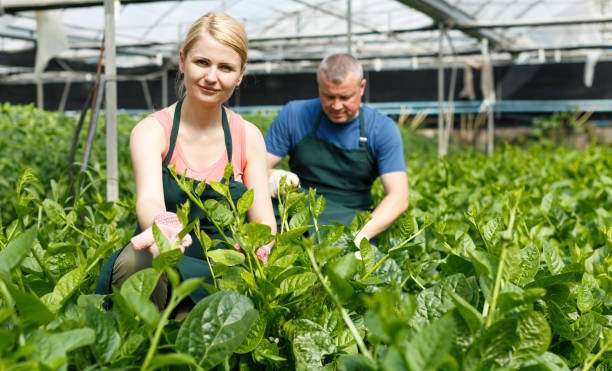Malabar spinach (Basella alba or Basella rubra) is a versatile and nutritious green that thrives in warm climates. This vining plant is an excellent choice for a rooftop garden, where space can be maximized by growing vertically. Here’s a step-by-step guide to growing Malabar spinach on your rooftop.
Benefits of Growing Malabar Spinach
- Nutrient-Rich: High in vitamins A, C, and iron.
- Heat Tolerant: Thrives in hot, humid climates where traditional spinach may struggle.
- Versatile: Can be used in salads, soups, and stir-fries.
- Space-Efficient: Its vining nature makes it perfect for vertical gardening.
Preparing Your Rooftop Garden
- Evaluate Your Space:
- Ensure your rooftop can support the weight of soil, plants, and containers.
- Check for adequate sunlight; Malabar spinach requires at least 6-8 hours of direct sunlight daily.
- Choose Containers:
- Use large pots or planters with good drainage. Hanging baskets or vertical trellises can also be effective.
- Ensure containers are at least 12 inches deep to accommodate the root system.
- Soil Preparation:
- Use well-draining, nutrient-rich potting soil.
- Incorporate organic compost to improve soil fertility.
Planting Malabar Spinach
- Sourcing Seeds or Seedlings:
- Obtain seeds or seedlings from a reliable source. Basella alba (green stem) and Basella rubra (red stem) are common varieties.
- Sowing Seeds:
- Start seeds indoors 4-6 weeks before the last expected frost date.
- Plant seeds 1/4 inch deep in seed trays or small pots.
- Keep the soil moist and warm (around 75°F) for germination.
- Transplanting:
- Transplant seedlings to their final containers when they are about 4 inches tall and the outdoor temperature consistently stays above 50°F.
- Space plants 12-18 inches apart to allow for growth and airflow.
Caring for Your Malabar Spinach
- Watering:
- Keep the soil consistently moist but not waterlogged. Water thoroughly when the top inch of soil feels dry.
- Rooftop gardens can dry out quickly, so monitor moisture levels regularly.
- Feeding:
- Fertilize with a balanced, water-soluble fertilizer every 4-6 weeks during the growing season.
- Alternatively, use organic options like compost tea or fish emulsion.
- Support and Training:
- Provide a trellis, stakes, or other support structures for the vines to climb.
- Gently tie the vines to the supports as they grow.
- Pest and Disease Management:
- Monitor for common pests like aphids, spider mites, and leaf miners. Use insecticidal soap or neem oil if necessary.
- Ensure good air circulation to prevent fungal diseases. Remove any infected leaves promptly.

Harvesting and Usage
- Harvesting:
- Start harvesting leaves when the plant is about 12 inches tall.
- Pick the outer leaves first, allowing the inner leaves to continue growing.
- Regular harvesting encourages new growth.
- Usage:
- Use fresh leaves in salads, stir-fries, and soups.
- Cooked leaves can be used similarly to spinach in various recipes.
Tips for Success
- Heat and Humidity: Malabar spinach thrives in hot, humid conditions, making it ideal for summer gardens.
- Continuous Harvest: Regularly harvesting leaves will promote more growth and a longer harvest period.
- Companion Planting: Consider planting with other heat-loving vegetables like tomatoes, peppers, or eggplants.
By following these steps, you can successfully grow Malabar spinach in your rooftop garden, providing you with a continuous supply of fresh, nutritious greens throughout the growing season. Happy gardening!


Leave A Comment